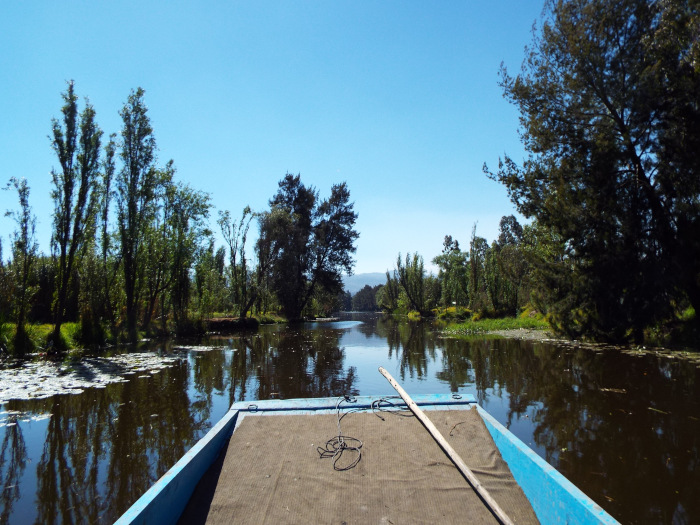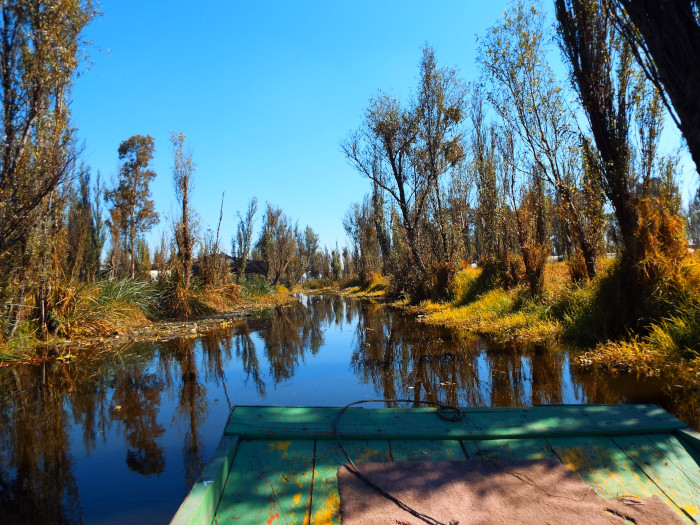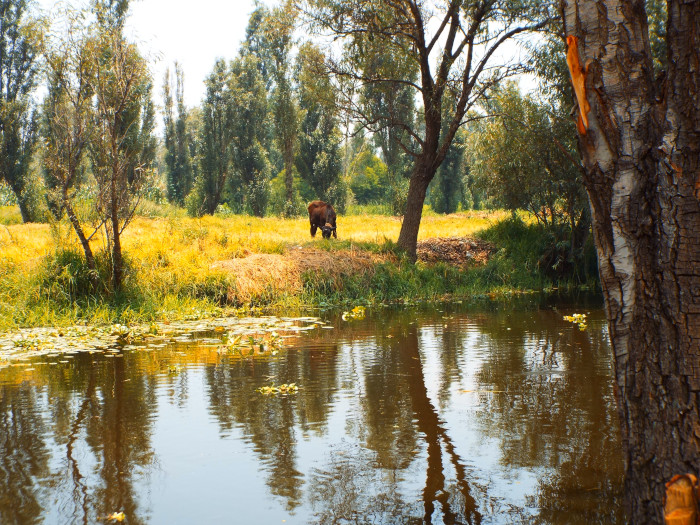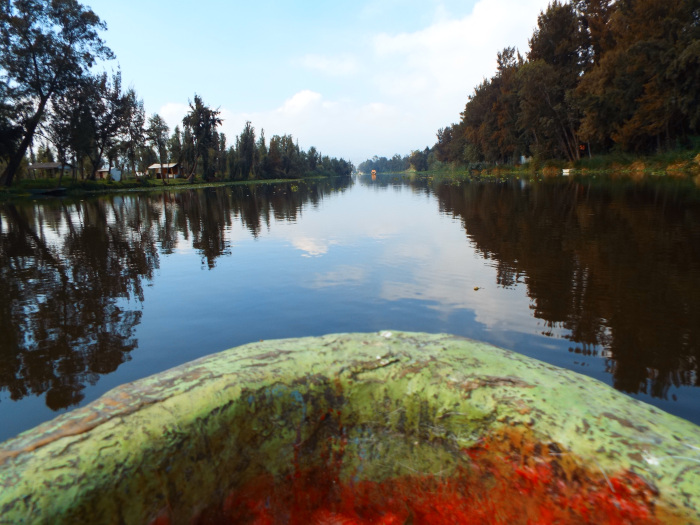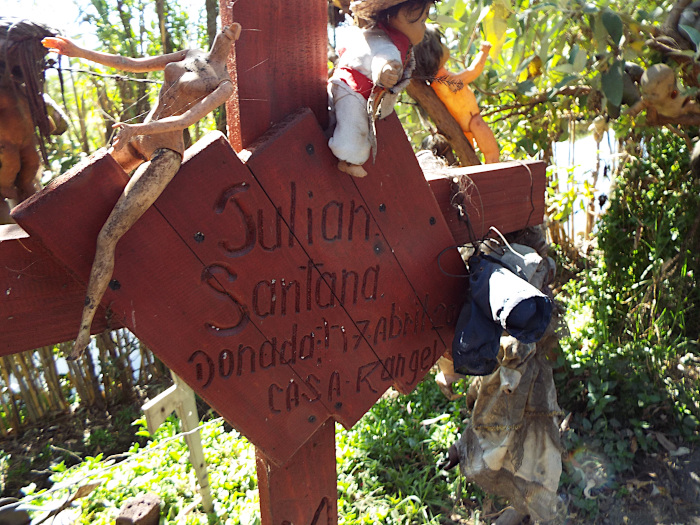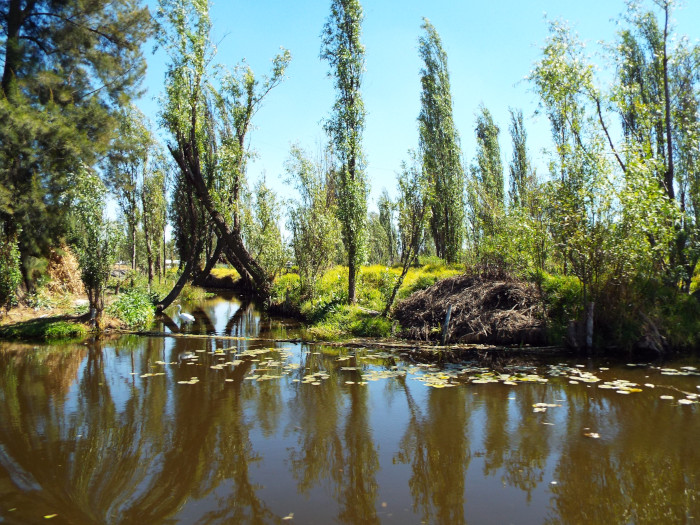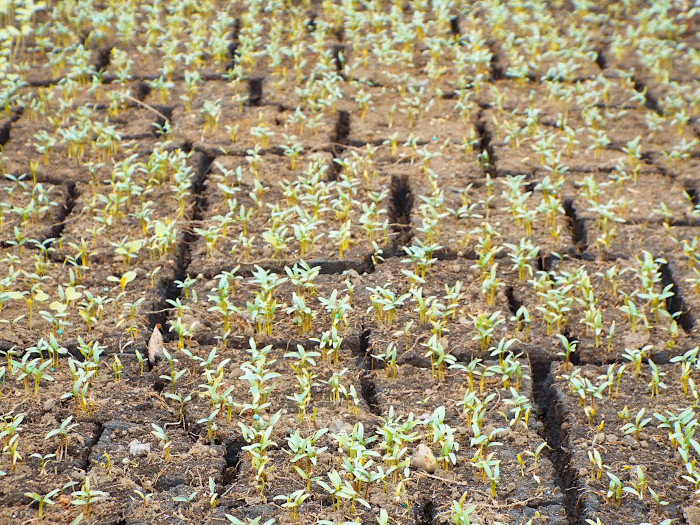Xochimilco
To travel to Mexico City and not experience Xochimilco would be a shame and a travesty. Venice’s rowdy cousin, the canals of Xochimilco are filled each day with brightly-colored flat-bottom boats, women in canoes selling cold beer and quesadillas and marimba bands with giant xylophones that will ease up to your boat and sing a song for about 2.50. The water around you, despite the occasionally shimmer of grease on its surface, is buzzing with life — insects, fish and dozens of bird species make their home in Xochimilco and you’re likely to run into various types of ducks, herons, and songbirds as you float along the waterways.
Tips for the trip:
- Don’t let the boat pilots convince you that the official price listed on signs you will see throughout the docks is per person, they are per hour regardless of the amount of people on your boat. Prices run about 350p an hour at the time of this writing.
- Be careful ordering food and drink from floating vendors, not because you are likely to get sick but because they also price-gouge. Ask for the price in advance before you get stuck with a hefty bill.
- If you want to see more of the chinampas than just the main canals (where most of the visitors, music, beer and trash are) it’s worth it to pay for an extra hour or two to see some side canals. Read below to see if you think the Isla de las Munecas is a worthy splurge.
- Weekends in Xochimilco are packed with tourists, both foreign and local. It makes for a spectacular party and lots of fun, but if you want something tamer and quieter go on a weekday.
- Don’t get in the water, drink the water or put your hands it in. The water in Xochimilco is not very clean, it won’t kill you, but it might make you sick if it gets in your mouth.
Isla de las Muñecas
The Island of the Dolls is a weird little destination, perfect for those who wish to inject a little morbidity into their day. The island is one of the chinampas’ various floating gardens and was once the home of farmer Julián Santana Barrera. The legend tells of a young girl who drowned under mysterious circumstances and her body was found along the edge of the island. Santana later found a doll floating in the canals and assumed it to be hers. He hung it in a tree near where she drowned to appease her spirit. From there things snow-balled. Santana started hanging found dolls all over the island. The guide that currently manages the island insists that all the dolls on it were found somewhere in the canals — that seems like A LOT of dolls floating abandoned in the canals, but who are we to judge?
Santana is no longer alive and a cross marks the spot where he took his last breath, very close to the spot where he hung his first specimen. The dolls are creepy, dirty, and at times a little frightening. One smokes a cigarette, another has a burnt skull, another plays a plastic guitar. Entrance onto the island and a short tour of the island’s history will cost you 50p per person. The only way to reach it is by boat and the closest dock is the Embarcadero Cuemanco, but boat pilots will take you from the other docks as well.
Las Chinampas
The entire canal system was once chinampas — floating gardens where crops were grown and animals raised. Much of what you see if take a boat out from the main Xochimilco dock will be canals that are now residential instead of rural, but other parts of the system remain the same as 500 years ago. The chinampas themselves are not actually a “tourist” destination. Off the main canal routes with all the revelers and beer, these man-made islands are still used for agriculture and raising cattle.
A local Community-Supported Agriculture organization works with several families of farmers to grow organic produce for local restaurants and residents on the chinampas They are helping farmers to install biofilters in some of side canals to clean up heavy metals and toxins in the water and using organic techniques to clean up the soil, damaged by years of pesticide use and commercial production. One of those families works with me to offer a tour of their beautiful organic farm. If you want to see the non-touristy side of the chinampas come on a tour! Other local organizations and universities are also working to protect this incredible ecological treasure. The chinampas were declared cultural heritage by UNESCO all the way back in 1987 but it hasn’t done much to protect their degradation.
Tips for the trip: A kayak company rents two-person kayaks near the Embarcadero Cuemanco by the hour (100p) if you want to explore the chinampas on your own or you can hire one of the many flatbottom boats and boat pilots to guide you around. They will also let you park with them for 20p an hour. To find them go south past the end of the Embarcadero Cuemanco until you reach the Michmani Restaurant, that is where you should ask for the rentals.
You can take a cab from the Xochimilco metro to the two most popular docks: Embarcadero Belem or Embarcadero Nativitas. There is also Embarcadero Cuemanco to the north near the ecological park and several smaller docks in other locations that are a little harder to get to without your own vehicle.
The more distant from civilization the quieter and more peaceful the chinampas become as you float along. They are definitely worth seeing before the city’s sprawl takes over.
Looking for other nature escapes in and around the city? Check out the Teuhtli Volcano, Teotihuacan or Desierto de los Leones.
Click here to subscribe via RSS
